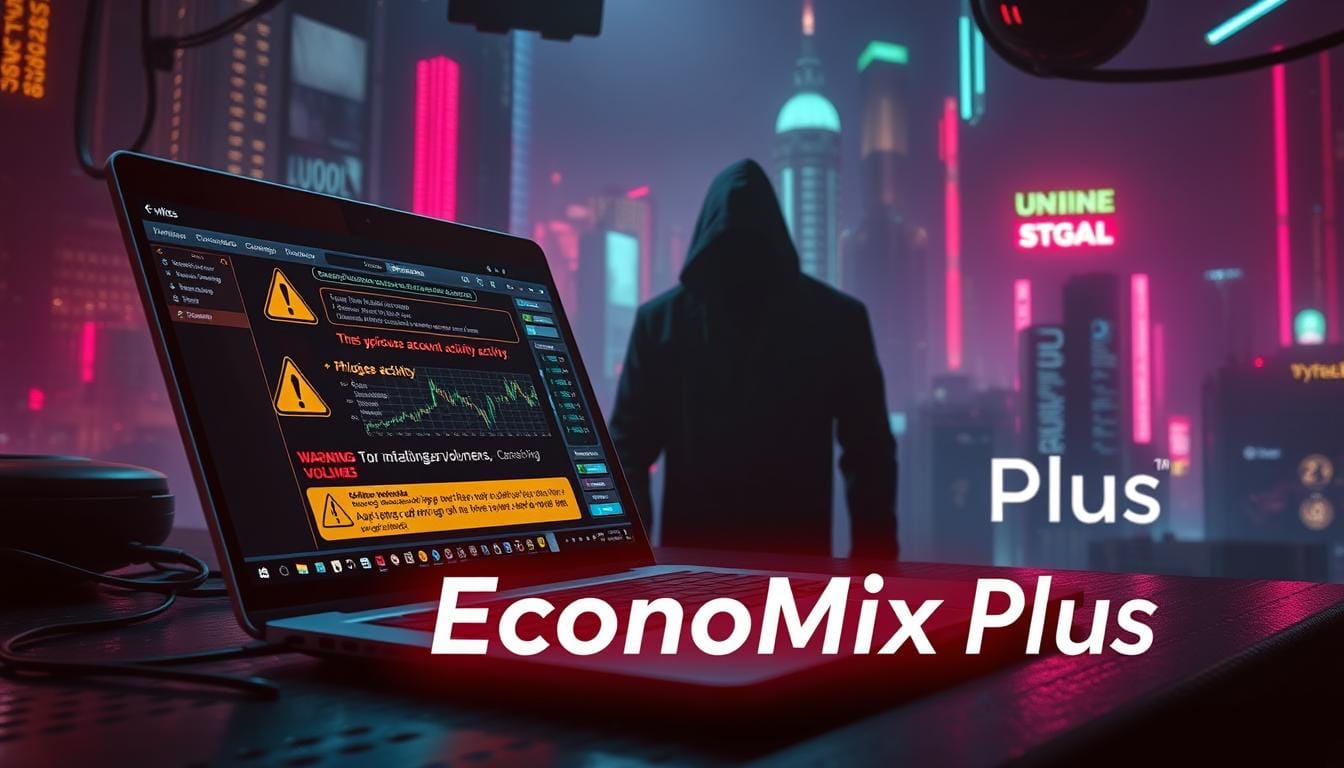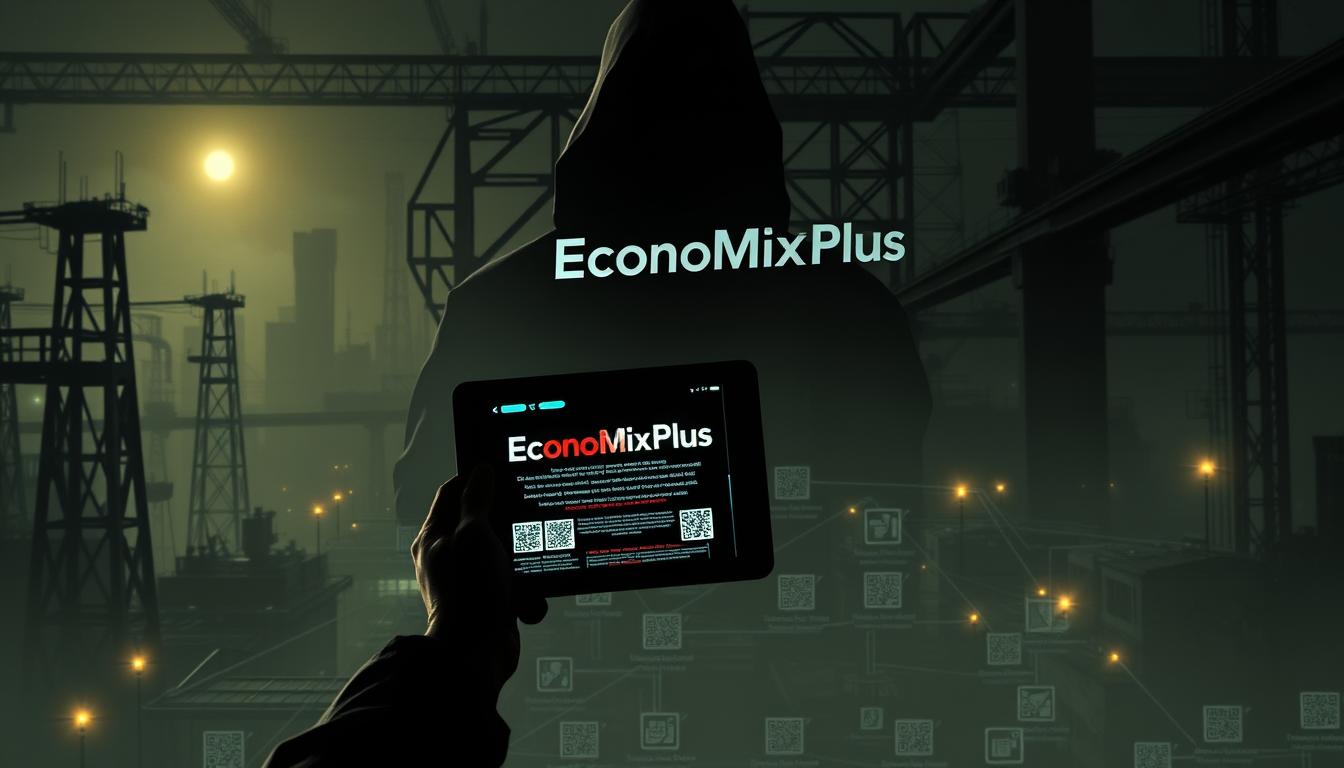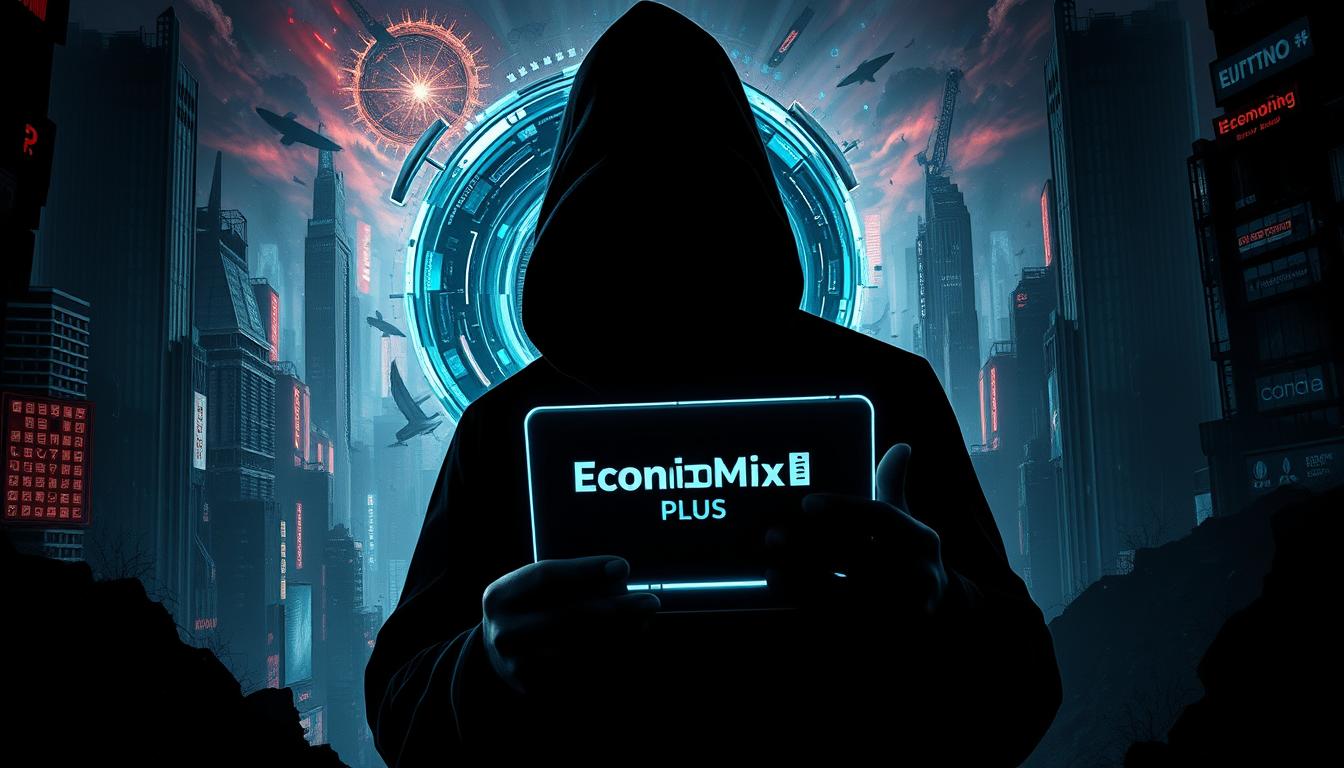The world of cryptocurrency has seen a rise in scams. Fraudulent digital assets are becoming more common. It’s vital to know the traps that could catch unsuspecting investors.
With the rise of dubious cryptocurrency projects, like meme coins tied to famous people, staying alert is more important than ever. So, how can you protect yourself from these crypto traps?
To avoid scams, you need to know how to spot them. This means understanding the warning signs and being careful when investing in digital assets.
Key Takeaways
- Be cautious of unsolicited investment opportunities in cryptocurrency.
- Research the project thoroughly before investing.
- Watch out for red flags, such as unrealistic returns or lack of transparency.
- Verify the authenticity of the project’s team and advisors.
- Stay informed about the latest cryptocurrency scams and trends.
The Rising Threat of Cryptocurrency Scams
Cryptocurrency scams are on the rise. It’s important to understand how they evolve to avoid them. As the crypto market grows, so does the number of scams designed to trick investors.
The Evolution of Crypto Fraud
Crypto fraud has become more complex. Scammers use advanced tactics to trick investors. The Trump meme coin scam and Nadcas.com are examples of convincing fake investment offers.
These scams promise high returns or guaranteed investments to attract victims. To protect yourself, it’s vital to know the scammers’ tactics. Here are some common methods:
- Creating fake websites and social media profiles that mimic legitimate crypto projects
- Using phishing attacks to steal sensitive information
- Promising unusually high returns or guaranteed investments
Why Everyday Investors Are Vulnerable
Everyday investors often fall victim to crypto scams. They lack awareness and understanding of the crypto market. Scammers exploit this, using convincing marketing and fake testimonials to seem credible.
To avoid scams, be cautious and do your research. Here are some steps to take:
- Research the project thoroughly, including the team and technology
- Be wary of unrealistic promises or guarantees
- Verify the project’s legitimacy through reputable sources
Understanding the Cryptocurrency Landscape
Cryptocurrency is becoming more popular, but it’s key to know the difference between real and fake projects. The world of cryptocurrency is full of projects trying to get your attention. Knowing how to tell real projects from scams is very important.
Legitimate vs. Fraudulent Crypto Projects
Real cryptocurrency projects are open, have a clear purpose, and have a team you can check out. Scams, on the other hand, promise too much money too fast or try to rush you into investing. To protect your crypto, you must carefully check out any project.
Look for projects that share detailed info about their tech and purpose. Scams usually don’t give clear details or make big promises without backing them up. Be wary of anything that seems too good to be true or doesn’t follow through on its promises.
| Characteristics | Legitimate Projects | Fraudulent Projects |
|---|---|---|
| Transparency | Clear info about the team, tech, and purpose | Little to no info or vague promises |
| Returns | Realistic goals based on the project’s chances | Too high returns or guaranteed wins |
| Urgency | No rush to invest | Try to make you invest fast |
The Psychology Behind Crypto Scams
Crypto scams use tricks to get people to invest. They might make you feel like you’ll miss out or promise big profits. Knowing these tricks can help you avoid phishing scams and other crypto fraud.
Understanding why scams work can help you invest smarter. By spotting scam signs, like scam alert for cryptocurrencies, you can keep your crypto safe.

Common Types of Cryptocurrency Scams
Cryptocurrency scams come in many forms. It’s important to know these common threats to protect your investments. Scammers keep changing their tactics, so it’s key to stay updated on the latest schemes.
Pump and Dump Schemes
Pump and dump schemes artificially inflate a cryptocurrency’s price. They spread false or misleading info to do this. After the price goes up, scammers sell their coins, causing the price to drop. This leaves other investors with big losses.
These schemes often happen on social media and online forums.
Fake ICOs and Token Sales
Fake ICOs and token sales are another scam. Scammers create new coins or tokens with fake websites and whitepapers. They then take the money from investors and disappear.
For example, scams like Nadcas.com promise high returns that never happen.

Phishing Attacks in the Crypto Space
Phishing attacks are a big threat in crypto. Scammers send fake emails or messages to get your private keys or login info. These attacks can steal your crypto.
Always check if websites and emails are real before giving out sensitive info.
Ponzi and Pyramid Schemes
Ponzi and pyramid schemes promise high returns with guaranteed success. They make money by getting new investors to pay earlier ones, not through real investments. When there aren’t enough new investors, the scheme fails.
| Scam Type | Description | Warning Signs |
|---|---|---|
| Pump and Dump | Artificially inflating cryptocurrency prices | Sudden price spikes, misleading information |
| Fake ICOs/Token Sales | Scammers creating fake cryptocurrencies | Unrealistic promises, lack of transparency |
| Phishing Attacks | Tricking victims into revealing sensitive info | Suspicious emails, fake websites |
| Ponzi/Pyramid Schemes | Promising unusually high returns | Guaranteed returns, emphasis on recruiting |
Knowing about these common scams helps protect you from investment scams. Always be careful and research well before investing in any crypto project.
How to Spot a Scam Crypto Don’t Fall for the Trap!
Exploring cryptocurrency can be tricky. It’s key to know the warning signs of scams. Scammers use clever tricks to trick investors into fake deals. So, it’s vital to stay alert and informed.
Unrealistic Promises and Guarantees
Scams often promise unrealistic returns or guarantees. Real investments always have some risk. No project can promise profits without risk. If you see a project promising high returns with no risk, it’s a big warning.
- Be cautious of projects that promise returns that are significantly higher than the market average.
- Watch out for guarantees that are not backed by a clear explanation of how they will be achieved.
- Avoid investments that downplay the risks involved or fail to provide a balanced view of possible outcomes.

Pressure Tactics and Artificial Urgency
Scammers use pressure tactics to make you act fast. They might say it’s a limited-time offer or you’ll miss out. Real projects give you time to think and learn.
- Be wary of investment opportunities that require you to act quickly.
- Take your time to research and verify the legitimacy of a project.
- Don’t let fear of missing out (FOMO) cloud your judgment; a legitimate investment won’t disappear overnight.
Knowing these tactics helps you avoid crypto scams. Stay informed to protect yourself.
Red Flags in Cryptocurrency Projects
Looking closely at cryptocurrency projects can show red flags. These flags help tell real investments from scams. Knowing what to watch for is key to stay safe in crypto trading and avoiding crypto scams.
Anonymous or Unverifiable Team Members
A big warning sign is a project with anonymous or unverifiable team members. Good projects have a clear team with real credentials. If you can’t find team info, it might be a scam. Always check the team’s background.
Lack of Clear Use Case or Technology
A lack of clear use case or technology is another warning. Good projects have a clear purpose and solid tech. If a project’s plans are unclear, it could be a scam. Look for a clear purpose when checking a project.

Poor Quality Whitepaper and Documentation
The quality of a project’s whitepaper and documentation matters a lot. A good whitepaper explains the project’s goals and tech. Bad documentation might mean it’s a scam. Always check the project’s papers carefully.
Suspicious Social Media Presence
A project’s social media presence can also raise red flags. Watch out for fake followers or bots. Real projects have real community engagement. Be careful of suspicious social media activity when recognizing crypto scams.
Conducting Thorough Due Diligence
The key to safe crypto investing is in doing your homework. The crypto market keeps growing, making it more important to do your research. This way, you can avoid scams and fake projects.
Step-by-Step Verification Process
To check if a crypto project is real, follow some key steps. First, look into if the project is registered and legal. This means checking if it meets legal standards and follows the law.
Checking Project Registration and Legal Status
Make sure the project is legally registered and follows the rules. You can find this info on official websites or with financial regulators. Being registered is a big sign of a project’s trustworthiness.
Verifying Partnerships and Endorsements
Good projects usually have real partnerships and endorsements. Look for official announcements or confirmations from these partners. This helps you know if they are real.
| Verification Step | Action | Red Flag |
|---|---|---|
| Project Registration | Check official registries | No registration or fake records |
| Partnerships | Verify announcements | No verifiable partners |
| Legal Compliance | Check regulatory compliance | Non-compliance or fake claims |
Red Flags During Due Diligence
Watch out for red flags like lack of transparency or unverifiable claims. These signs can mean a project is a scam.
By doing your homework, you lower the risk of getting scammed. Always put crypto investment safety first by checking projects and being careful of scams.
Analyzing a Cryptocurrency’s Technical Foundation
To check if a cryptocurrency is real, you need to look at its tech. A deep dive into its tech can show if it’s safe or not.
Examining the Blockchain Technology
The blockchain is the heart of a cryptocurrency. It’s key to check if it’s secure and works well. You should see what kind of blockchain it uses and how fast and safe it is.
Verifying Open Source Code
Good projects share their code. You can find this on sites like GitHub. Seeing regular updates means the project is healthy.
Checking for Security Audits
Good projects get security checks from outside firms. These checks find weak spots and prove the project is safe. Look for reports from trusted firms to see if claims are true.
Identifying Technical Red Flags
When checking a cryptocurrency’s tech, watch out for these warning signs:
- Old or not updated code
- No clear docs or whitepaper
- Security issues not fixed
- Claims of being too big or too fast without proof
Here’s a quick guide to spotting a real project:
| Technical Indicator | Legitimate Project | Potential Scam |
|---|---|---|
| Open Source Code | Available and updated often | Not there or old |
| Security Audits | Done by trusted firms regularly | None or claims can’t be checked |
| Documentation | Clear, detailed, and up-to-date | Missing, unclear, or old |

By looking closely at a cryptocurrency’s tech, you can decide if it’s worth it.
Investigating the Team Behind a Cryptocurrency
Before you invest in a cryptocurrency, check the team behind it. A good team is key to a project’s success and trustworthiness. If the team is unknown or inexperienced, it’s a big warning sign of a crypto scam team signs.
Verifying Team Credentials and Experience
It’s important to verify the team’s background and experience. This means doing background checks and checking their professional profiles.
Background Check Techniques
Doing deep background checks on team members can show their past work and any warning signs in crypto teams. Use professional networking sites and other online tools to find out more.
Cross-Referencing Professional Profiles
Checking team members’ profiles on different platforms helps confirm their experience and credentials. This is key in checking crypto team credentials and making sure the info is right and consistent.
Warning Signs in Team Composition
Knowing the warning signs in team makeup can help you avoid scams. Look out for anonymous team members, lack of experience, and profile or statement inconsistencies.
By carefully checking the team behind a cryptocurrency and watching for warning signs, you can make better investment choices. Always make sure to do crypto team verification as part of your research.
Evaluating the Community and Market Presence
To avoid crypto scams, it’s key to check a project’s community and market presence well. A real cryptocurrency project has a strong, active community and is open about its market presence.
Genuine vs. Artificial Community Engagement
Distinguishing between real and fake community engagement is vital. Scammers often make it seem like a project is more popular than it is.
Analyzing Social Media Metrics
Look for consistent growth in followers and engagement on social media. Be cautious of sudden, unnatural spikes in activity or low-quality content.
Real projects grow their social media presence naturally and steadily.
Evaluating Community Discussions
Checking community discussions is also important. Real communities talk about the project’s future, ask good questions, and share useful content. Watch out for communities that are too promotional or repetitive.
Market Capitalization and Trading Volume Analysis
Market capitalization and trading volume show a cryptocurrency’s market presence. A good cryptocurrency has a stable market capitalization and significant trading volume.
| Indicator | Legitimate Project | Potential Scam |
|---|---|---|
| Market Capitalization | Stable, reasonable | Volatile, artificially inflated |
| Trading Volume | Significant, consistent | Low, manipulated |
| Community Engagement | Genuine, active discussions | Artificially inflated, promotional |
By looking at these factors carefully, you can decide if a cryptocurrency project is real.
Tools and Resources for Crypto Scam Detection
Fighting crypto scams requires the right tools. The world of cryptocurrency keeps changing, so do scam tactics. Luckily, there are many resources to help spot and dodge scams.
Blockchain Explorers and Analysis Platforms
Blockchain explorers are key tools for checking blockchain transactions. They help see if a crypto project is real. By looking at transaction histories and wallet addresses, you can find warning signs.
How to Use Block Explorers
To use block explorers well, first search for the crypto or token you’re curious about. Check transaction volumes, wallet distributions, and any odd activity. For example, a big increase in transactions from one wallet might mean a scam.
Token analysis tools offer more info on tokens. They show smart contract code, transaction history, and market data. These tools help judge a token’s realness and value.
Community Forums and Watchdog Websites
Crypto forums and watchdog sites are great for spotting scams. They let users share their experiences and warn others. By keeping up with these, you can learn about new scam tricks and stay safe.
Good forums include Reddit’s r/CryptoCurrency and Bitcointalk. Sites like CryptoScamAlert and ScamWatch list scams and help victims. Joining these communities can really help you avoid crypto scams.
Ethical Cryptocurrency Investment Practices
Exploring the world of cryptocurrency? It’s key to invest ethically. Ethical investments aim for long-term growth and clear practices. They ensure your money grows while helping the crypto world.
Principles of Ethical Crypto Investment
Ethical crypto investment has core principles. Transparency is essential; you should know exactly where your money goes. Sustainability matters too, as it means the projects are good for the planet and economy over time.
| Principle | Description | Importance |
|---|---|---|
| Transparency | Clear understanding of investment use | High |
| Sustainability | Long-term environmental and economic viability | High |
| Community Focus | Projects that benefit and engage with their community | Medium |
Sustainable and Transparent Projects
Seek out projects that value sustainability and transparency. These are more likely to grow in value over time and avoid scams.
Community-Focused Cryptocurrencies
Projects that focus on their community tend to thrive. A strong, active user base is a sign of a project’s health and future success.
Long-Term Value vs. Short-Term Gains
Ethical crypto investment looks to the future, not just quick wins. While fast profits might seem appealing, sustainable projects usually offer steadier growth.
In summary, ethical crypto investment is good for you and the crypto world. By choosing projects that are transparent, sustainable, and community-driven, you make smart choices that match your values and goals.
What to Do If You’ve Been Scammed
Discovering you’ve fallen victim to a crypto scam can be devastating. But, acting quickly can help lessen the damage. If you’ve lost money to a fake cryptocurrency scheme, it’s important to act fast. This can help protect your remaining assets and maybe even get back some of your lost money.
Immediate Steps to Take
Your first step should be to keep any remaining cryptocurrency safe. Move your funds to a new, secure wallet right away to avoid losing more. If you used a centralized exchange, change your passwords and enable two-factor authentication to lock down your account.
Securing Your Remaining Assets
To keep your assets safe, follow these steps:
- Transfer your cryptocurrencies to a hardware wallet or a very secure software wallet.
- Use multi-signature transactions if you can.
- Don’t share any details about your new wallet.
Documenting the Scam
It’s key to document the scam for recovery and reporting. Keep records of:
- All transactions linked to the scam.
- Any messages or emails with the scammers.
- Details about the scam, like URLs or wallet addresses.
Reporting Crypto Scams to Authorities
Reporting the scam is vital to try and get your money back and stop others from getting scammed. You should report it to:
- Your local financial regulatory authority.
- The cryptocurrency exchange or platform where the scam happened.
- Specialized crypto scam reporting websites and forums.
By taking these actions, you can protect yourself and others from crypto scams. While getting your money back isn’t guaranteed, acting fast and reporting the scam can help reduce the harm.
Protecting Your Crypto Future: Building Knowledge and Resilience
The world of cryptocurrency is always changing. It’s key to keep your investments safe and secure. By staying informed and careful, you can avoid scams and protect your assets.
To keep your investments safe, look for real projects and be wary of too-good-to-be-true offers. Always learn about the latest in cryptocurrency and how to invest wisely.
This way, you’ll be ready to make smart choices in the market. Keeping your crypto future safe takes work, but with the right knowledge, you can reduce risks and find great opportunities.
FAQ
▶
▶
▶
▶
▶
▶
▶
▶
▶
▶














